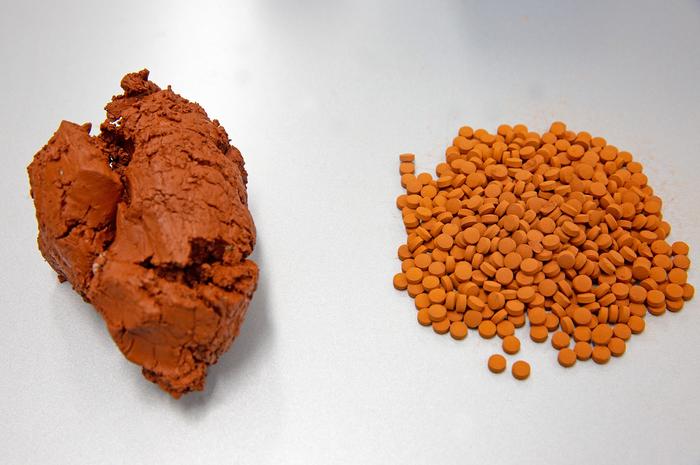A team of researchers has found an ingenious way to tackle two environmental problems at once. They’ve developed a method to transform a troublesome industrial byproduct into a highly effective catalyst for breaking down potent greenhouse gases. This development could have far-reaching implications for both waste management and climate change mitigation efforts.
From Red Mud to Green Solution
The Korea Institute of Energy Research (KIER) has successfully created a catalyst from red mud, a waste product of aluminum manufacturing. This new catalyst can break down HFC-134a, a common refrigerant, with 99% efficiency.
Red mud is produced in massive quantities – over 200,000 tons annually. For every ton of aluminum made, up to 1.5 tons of this reddish, alkaline waste is generated. Until now, most of it ended up in landfills or artificial lakes, posing significant environmental risks due to its high pH and heavy metal content.
HFC-134a, on the other hand, is a hydrofluorocarbon commonly used in air conditioners and refrigerators. While it was developed to replace even more harmful coolants, HFC-134a still packs a powerful climate punch. It traps heat in the atmosphere 1,300 times more effectively than carbon dioxide.
Dr. Shin-kun Ryi, who led the research, explained: “Red mud is a strongly alkaline substance that can cause severe environmental pollution if it enters the surrounding environment, but there have been no suitable technologies to process and recycle it.”
A Catalyst for Change
The KIER team’s breakthrough lies in harnessing the unique properties of red mud. Its porous structure provides a large surface area for reactions to occur. The mud is also thermally stable, which prevents the catalyst from breaking down during use.
To boost performance even further, the researchers used a simple heat treatment. This process creates new compounds within the red mud that strengthen the catalyst and increase its reactive surface area.
Perhaps most impressive is the catalyst’s longevity. It maintained its high decomposition rate of over 99% for 100 continuous hours of testing. This suggests the potential for long-term industrial use.
Current methods for disposing of HFC-134a have significant drawbacks. Burning it can create harmful nitrogen oxides, while plasma-based decomposition requires substantial energy input. The new catalyst operates at lower temperatures, potentially offering a more efficient and environmentally friendly alternative.
Why it matters: This research demonstrates a powerful example of circular economy principles in action. By transforming an industrial waste product into a tool for fighting climate change, we can reduce pollution, conserve resources, and tackle greenhouse gas emissions simultaneously.
The implications extend beyond refrigerants. This approach could inspire similar solutions for other waste products and environmental challenges. As we seek to build a more sustainable future, innovations that turn problems into solutions will be crucial.
Dr. Ryi emphasized the dual benefits: “The developed catalyst manufacturing technology not only recycles waste to reduce environmental pollution but also effectively decomposes refrigerants, which have a strong greenhouse gas effect, with excellent performance.”
The research team’s findings have been published in the Journal of Industrial and Engineering Chemistry. As the world grapples with the urgent need to reduce greenhouse gas emissions, this development offers a promising new tool in the fight against climate change.


